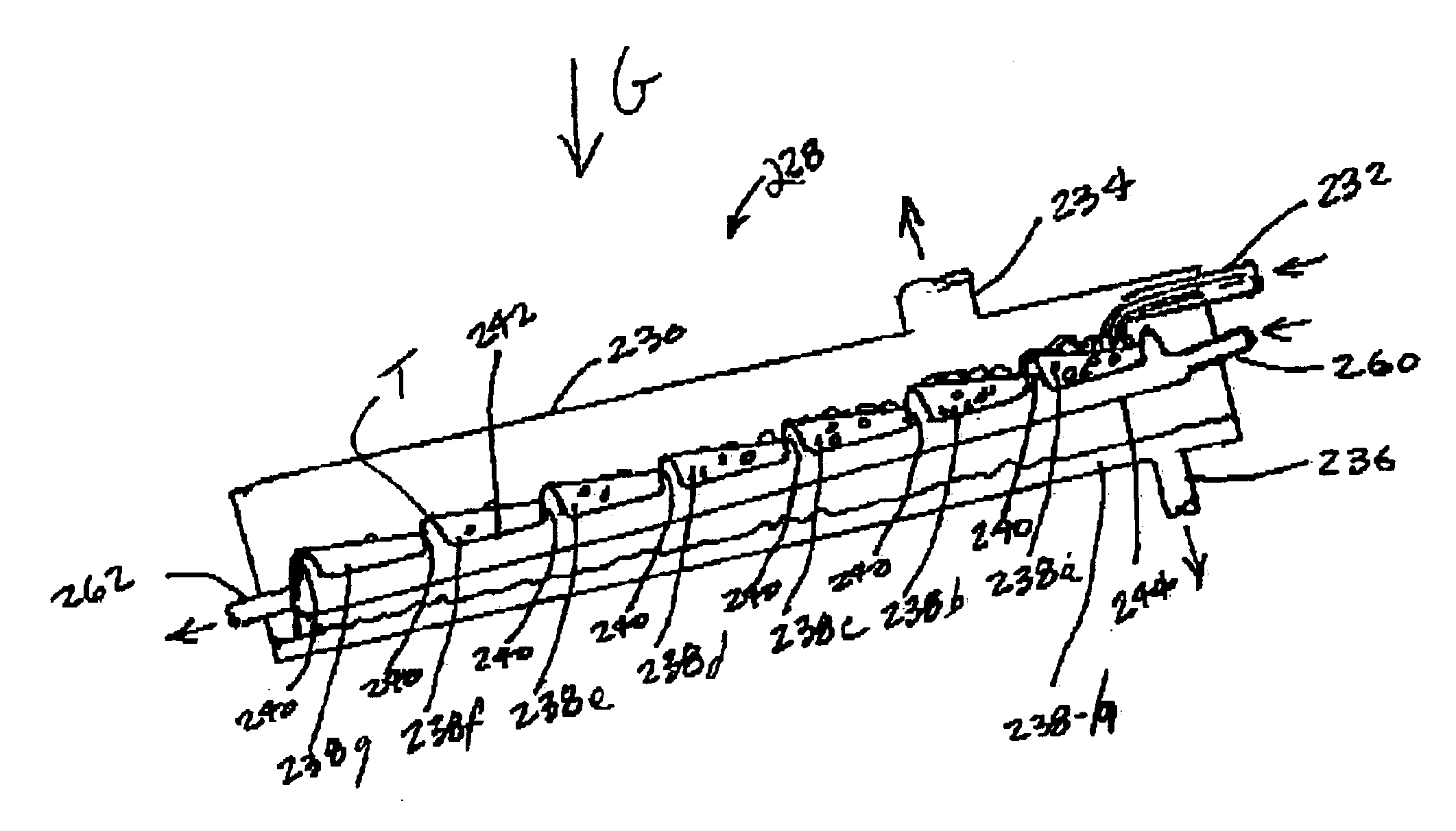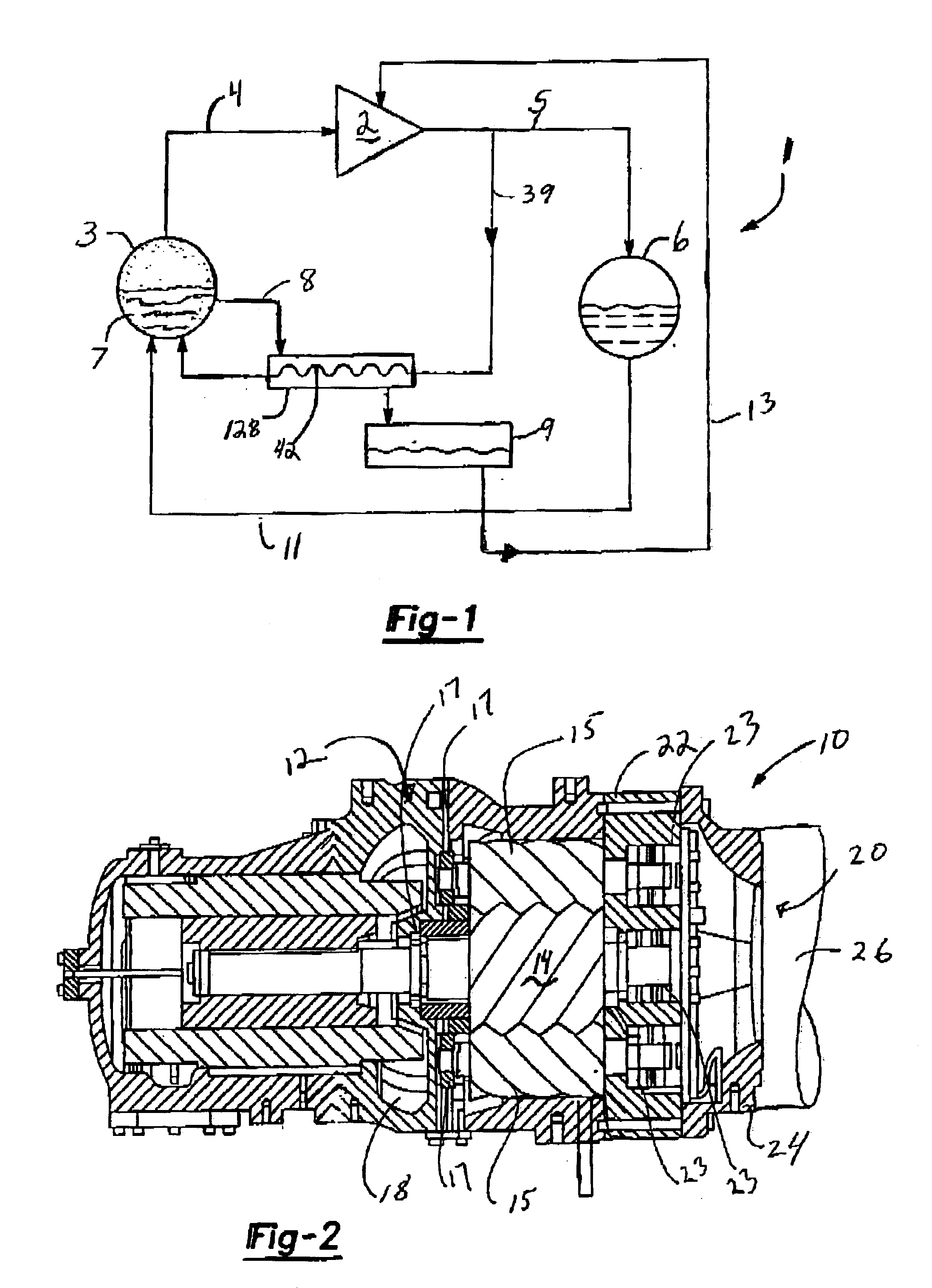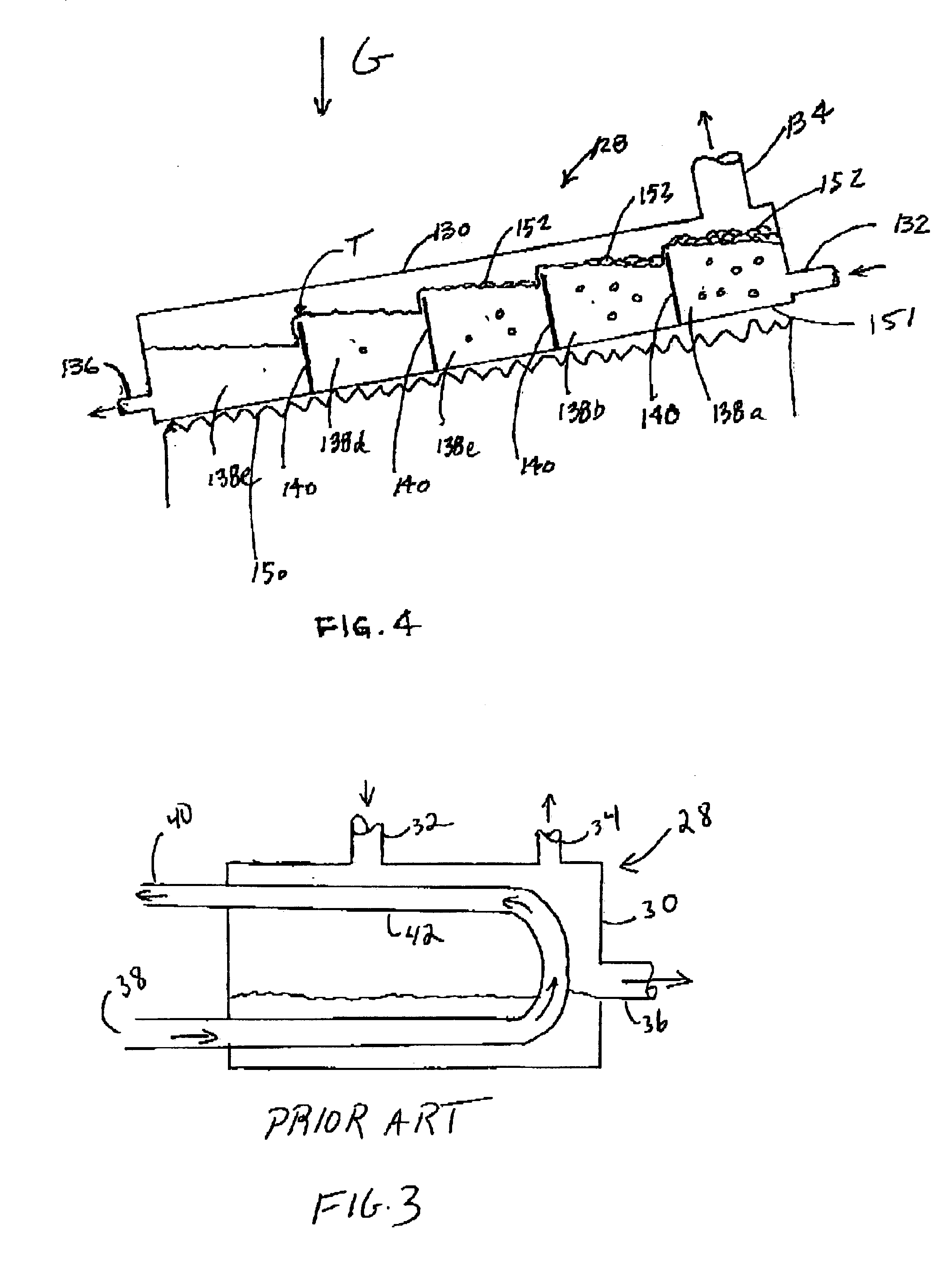Lubricant still and reservoir for refrigeration system
a technology of lubricant still and reservoir, which is applied in the direction of separation process, lighting and heating apparatus, multiple-effect evaporation, etc., can solve the problems of depletion of lubricant supply for bearing and rotor lubrication, degraded heat transfer efficiency of evaporator, and not always provided fully satisfactory, etc., to achieve high viscosity, increase flow, and high viscosity
- Summary
- Abstract
- Description
- Claims
- Application Information
AI Technical Summary
Benefits of technology
Problems solved by technology
Method used
Image
Examples
Embodiment Construction
[0020]Referring now to the drawings in detail there is shown in FIG. 1 a schematic view of a refrigerant system 1, including a compressor 2.
[0021]As is known, a flooded style evaporator 3 delivers primarily gaseous refrigerant to the compressor 2 through a line 4. Gaseous refrigerant is compressed by compressor 2, entraining lubricant during its passage through compressor 2 that is used to lubricate the bearings and rotors of compressor 2. From the compressor 2, refrigerant with entrained oil passes through a line 5 to a condenser 6. Compressed gaseous refrigerant is cooled in the condenser, transferred into a liquid phase, with oil in mixture or solution, as it passes in line 11 through an expansion valve (not shown) to evaporator 3. At the evaporator 3, an environment to be cooled is cooled by the refrigerant in the evaporator. As is shown, it is typical that liquid refrigerant 7 settles from the refrigerant in the evaporator. This refrigerant 7 is typically lubricant or oil laden...
PUM
 Login to View More
Login to View More Abstract
Description
Claims
Application Information
 Login to View More
Login to View More - R&D
- Intellectual Property
- Life Sciences
- Materials
- Tech Scout
- Unparalleled Data Quality
- Higher Quality Content
- 60% Fewer Hallucinations
Browse by: Latest US Patents, China's latest patents, Technical Efficacy Thesaurus, Application Domain, Technology Topic, Popular Technical Reports.
© 2025 PatSnap. All rights reserved.Legal|Privacy policy|Modern Slavery Act Transparency Statement|Sitemap|About US| Contact US: help@patsnap.com



